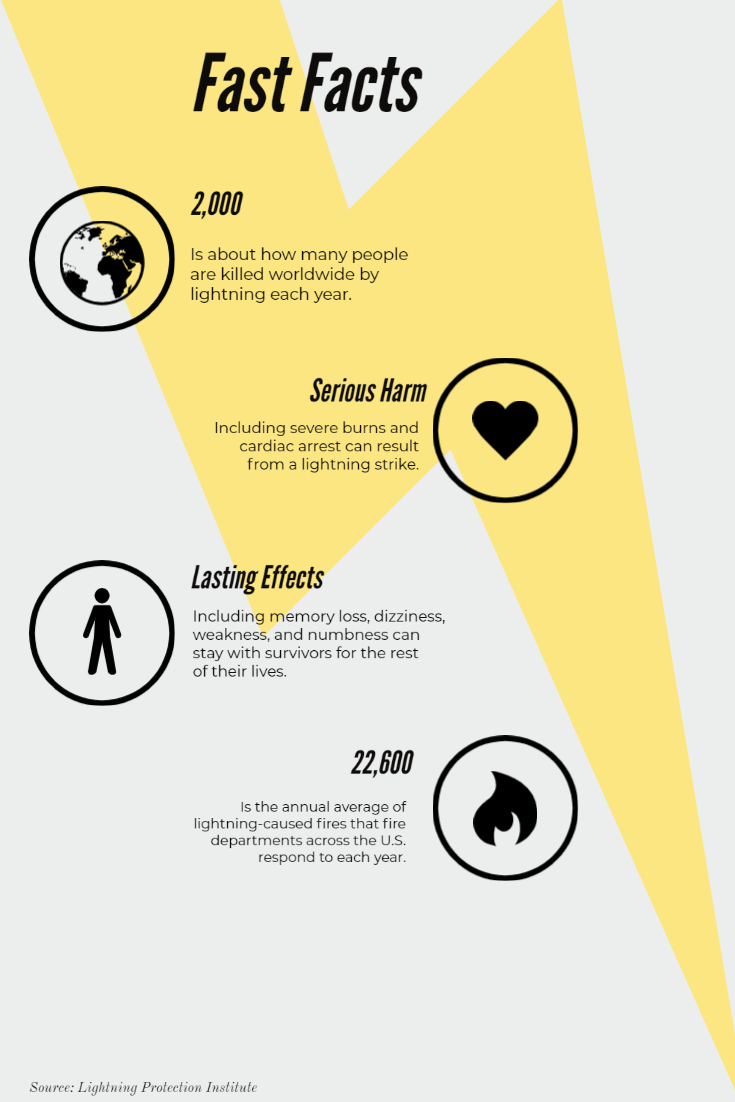Lightning Protection Systems
When it comes to lightning protection, many people think of Benjamin Franklin’s experiment of flying a kite in a lightning storm. Whether or not this is actually how it happened, Franklin did usher in the thinking that buildings could be protected from lightning. While he used a simple metal rod to safely direct the electricity, today’s lightning protection systems are a little more complex.
Alvine Engineering takes building safety seriously. As part of the design process, we ask questions and provide information for the owner to make an informed decision on whether or not to install a lightning protection system. If the owner decides to install a system, we specify an outline for the performance criteria, basic requirements, and desired certifications for it. We then review the completed design for compliance with our specifications.
“As a consultant, among many things, our job is being an advocate for the building owner and doing our best to watch out for their best interests,” explains Gene Neemann, an associate principal at Alvine Engineering. “Lightning protection is not usually something our clients think of first and foremost. So as part of the design process, we ask about lightning protection, and if it is a desired component for the project. We can then provide guidance and answer questions to help our client make an informed decision.”
While a system can be designed for any type of building, lightning protection is more important for some buildings than others. Buildings that often need more protection are high-rises and buildings that house critical, sensitive, or expensive equipment. These special-equipment structures can include data centers, hospitals, corporate headquarters, manufacturing plants, and more.
“As a consultant, among many things, our job is being an advocate for the building owner and doing our best to watch out for their best interests.”
—Gene Neemann, Associate Principal at Alvine Engineering

Learn More
Visit the Lightning Protection Institute‘s FAQ page or read their white paper, “Build & Protect: Lightning Protection Frameworks for Resilient Design and Construction.”
What is a Lightning Protection System?
The Lightning Protection Institute breaks lightning protection systems down into five main components:[1]
- Strike termination devices are the part of the system that makes first contact with the lightning strike.
- Cable conductors connect the strike termination device with the grounding electrode system, essentially acting has a highway to safely direct the lighting current over and through the building without causing damage.
- The grounding electrode system is the point underground that moves the lightning away from the building to a safe location.
- Bonding protects the other internal grounded metallic systems in a building from a lightning sideflash by connecting them to the lightning protection system.
- Surge protection devices prevent lightning from entering a building or its systems through utility lines.
Why Is a Lightning Protection System Important?
Lightning can cause damage in a variety of ways. The Lightning Protection Institute explains that while a lightning protection system attempts to address as many scenarios as possible, they are generally designed to[2]:
- Protect people – a direct strike is what most people think of when it comes to lightning safety, but a sideflash from surrounding objects such as trees or structures can be just as dangerous. Lightning protection systems are designed to transmit the current safely and prevent sideflashes.
- Protect against fire – the threat from fire caused by lightning is double-fold. A lightning strike can spark a fire within a building itself or it could spark a wildfire that can threaten entire communities.
- Protect against structural damage – an average lightning strike has enough energy to destroy roofs and walls (even those made of strong materials such as brick and concrete), as well as pierce gas piping that could cause a structural fire.
- Protect against damage to internal systems and equipment – a single lightning strike can carry up to 300 million volts of electrical energy, which can easily overwhelm the electrical circuitry and systems found in modern buildings. The more technology incorporated into buildings (computers, televisions, etc.), the more damage an electrical surge could cause.



